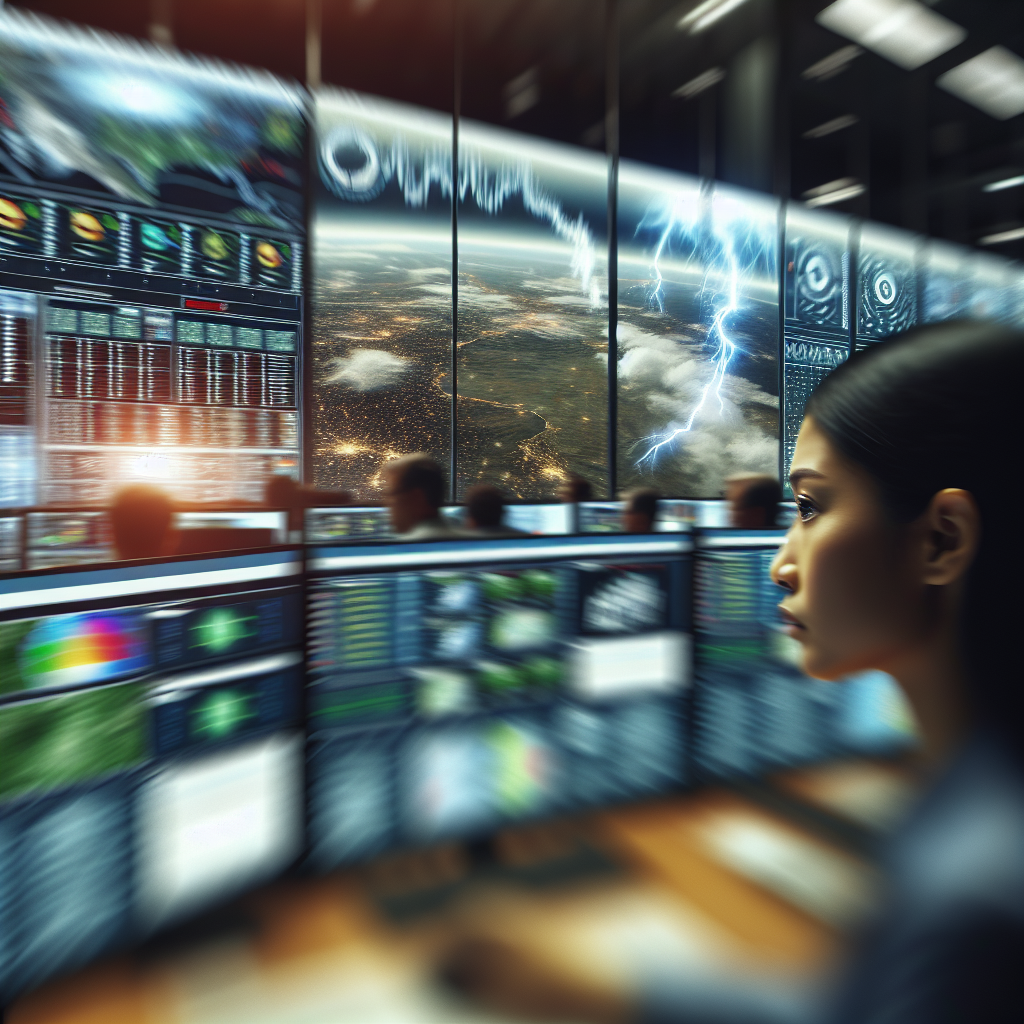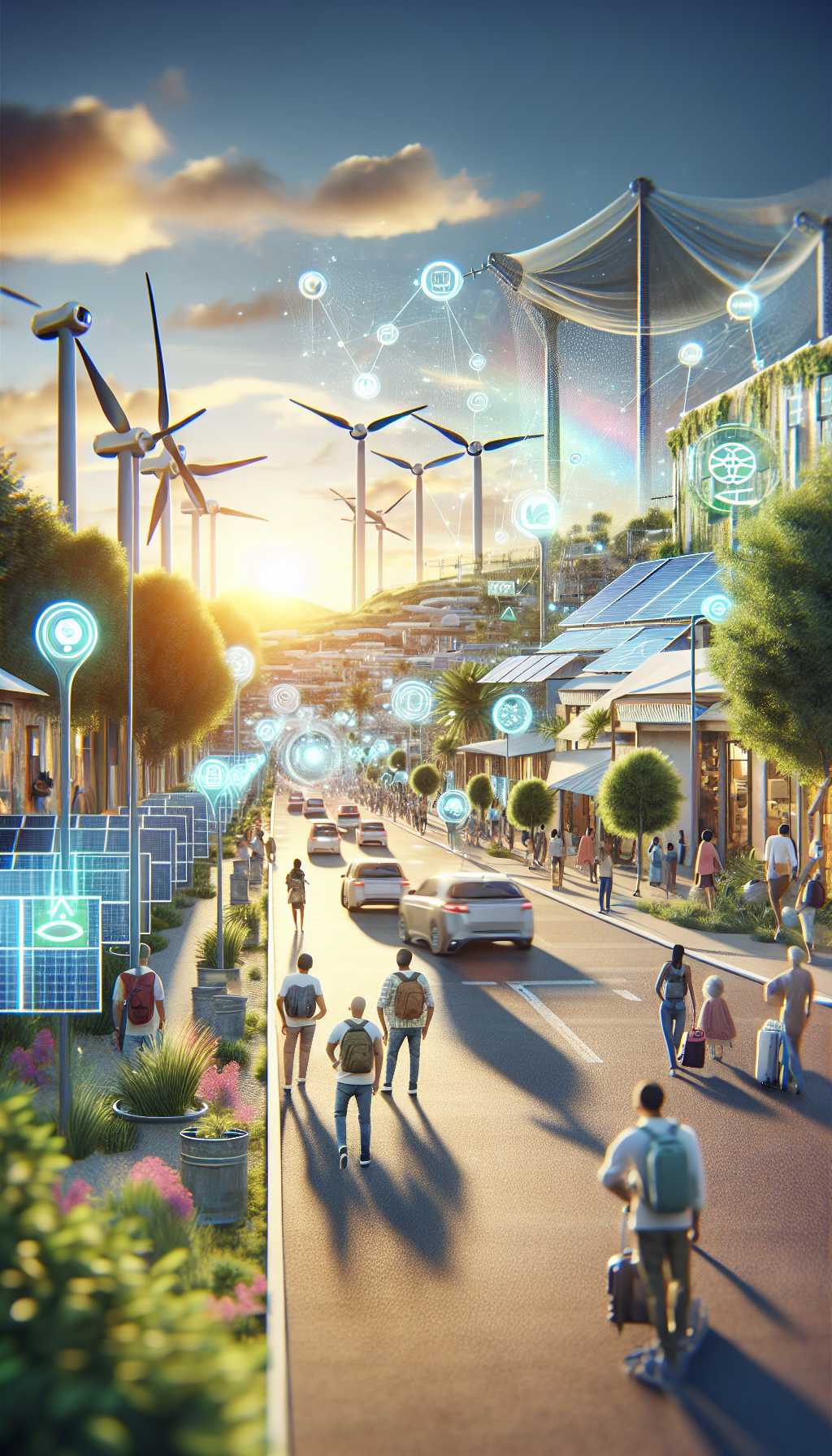Understanding Disaster Risk Reduction
Disaster Risk Reduction (DRR) is a systematic approach to identifying, assessing, and reducing the risks of disaster. It aims to minimize the damage caused by natural hazards like earthquakes, floods, droughts, and cyclones through an ethic of prevention. The concept of DRR is deeply rooted in the understanding that while natural hazards are inevitable, their impact on society is not. By implementing effective risk reduction strategies, communities can enhance their resilience and capacity to cope with disasters.
Key Components of Disaster Risk Reduction:
- Risk Assessment: Evaluating the potential hazards, vulnerabilities, and capacities of a community to anticipate the impact of disasters.
- Prevention and Mitigation: Strategies and actions taken to prevent or reduce the adverse impacts of natural hazards. This includes infrastructure improvements, environmental management, and public awareness campaigns.
- Preparedness: Developing systems and plans to effectively respond to disasters. This involves training, early warning systems, and emergency response mechanisms.
- Response: The immediate reaction to a disaster, focusing on saving lives, reducing health impacts, ensuring public safety, and meeting the basic needs of affected populations.
- Recovery: Activities that restore communities to normal or improved functioning following a disaster. This includes rebuilding infrastructure, health care, and economic support.
Data Visualization:
| Year | Natural Disasters Reported | Economic Losses (in billion USD) |
|---|---|---|
| 2010 | 320 | 123 |
| 2015 | 345 | 90 |
| 2020 | 389 | 210 |
These data points highlight the increasing frequency and economic impact of natural disasters globally. As the data suggests, while the number of reported disasters has increased over the years, the economic losses have fluctuated significantly, highlighting the need for effective DRR strategies to minimize these impacts. By understanding these trends, policymakers and communities can leverage insights to develop more robust systems for disaster risk management.
The Role of AI in Disaster Management
Artificial Intelligence (AI) plays a crucial role in enhancing the efficiency and effectiveness of disaster management strategies. By leveraging predictive analytics, AI systems can analyze vast amounts of data to foresee potential disasters and assess risks. This capability allows for timely warnings and the implementation of preventive measures, significantly reducing the impact on communities. AI algorithms process data from various sources, including satellite imagery, weather forecasts, and historical disaster records, to predict the likelihood and potential severity of disasters.
Moreover, AI optimizes resource allocation during disaster response and recovery efforts. By analyzing real-time data, AI can identify and prioritize areas that require immediate attention, ensuring that resources such as medical supplies, food, and rescue personnel are deployed effectively. This optimization not only saves lives but also minimizes economic losses. A study conducted by the International Federation of Red Cross and Red Crescent Societies demonstrated that AI-driven resource management systems improved response times by up to 30% in disaster-stricken regions.
Community engagement is another vital aspect where AI contributes significantly. AI-powered platforms facilitate communication between authorities and affected populations, enabling real-time updates and feedback. This interaction helps in tailoring disaster response strategies to the specific needs of communities, fostering resilience. Additionally, AI helps in creating risk awareness programs by simulating disaster scenarios and educating the public on preparedness measures.
While AI offers immense potential in disaster management, it also raises ethical concerns. Ensuring data privacy and addressing biases in AI models are critical to maintaining public trust and effectiveness. Collaborative efforts between policymakers, technologists, and communities are essential to establish guidelines that govern the ethical use of AI in disaster risk reduction. By doing so, we can harness the full potential of AI while safeguarding the rights and safety of vulnerable populations.
Sustainability and AI: A Perfect Match
Sustainability and Artificial Intelligence (AI) together form a powerful alliance in revolutionizing disaster risk reduction strategies. AI technologies, with their capacity to process vast amounts of data, enable more accurate predictive analytics which is crucial for anticipating disasters and mitigating their impacts. By forecasting events such as floods, earthquakes, and hurricanes, AI helps in developing proactive measures that are not only effective but also sustainable in the long term. This synergy between AI and sustainability ensures that resources are utilized efficiently, minimizing environmental footprints while maximizing the safety and resilience of communities.
In the realm of resource optimization, AI plays a pivotal role. By analyzing patterns and trends, AI systems can optimize the deployment of resources such as emergency services, medical supplies, and infrastructure repairs. This optimization is not merely about efficiency but also about sustainability, as it reduces waste and ensures that resources are used where they are most needed. The use of AI in logistics planning allows for a more sustainable approach to disaster management, cutting down on unnecessary resource expenditure and ensuring a swift response to affected areas.
| AI Capability | Impact on Sustainability |
|---|---|
| Predictive Analytics | Improves disaster forecasting, reducing environmental impact by preventing unnecessary interventions. |
| Resource Optimization | Ensures efficient use of resources, reducing waste and promoting sustainable practices. |
| Community Engagement | Fosters sustainable community practices by involving locals in disaster planning and response activities. |
Furthermore, AI facilitates community engagement which is essential for sustainable disaster risk reduction. By using AI-driven platforms, communities can be more actively involved in disaster preparedness and response efforts. These platforms provide educational resources, real-time alerts, and communication tools that empower individuals to take informed actions. This not only builds resilience but also nurtures a culture of sustainability, as communities become more aware of the importance of sustainable practices in their daily lives.
Predictive Analytics for Early Warning Systems
Predictive analytics plays a crucial role in enhancing early warning systems for disaster risk reduction. By leveraging vast amounts of data from various sources, including satellite imagery, weather data, and social media feeds, AI algorithms can predict potential disaster events with remarkable accuracy. These predictive capabilities allow for timely alerts, giving communities and authorities the lead time needed to prepare and respond effectively. For example, AI-driven models can analyze patterns in seismic activity to forecast earthquakes, potentially saving thousands of lives.
One of the significant advantages of using AI in predictive analytics is its ability to process real-time data and learn from historical patterns. This continuous learning process enables the refinement of predictive models, making them more accurate over time. AI systems can integrate data from multiple sources into a cohesive analysis, identifying correlations and trends that might not be apparent through traditional methods. This ability to process and analyze complex datasets is crucial for predicting natural disasters, such as hurricanes, floods, and wildfires, which are influenced by a multitude of factors.
An effective early warning system should not only predict disaster events but also communicate risks effectively to the populations at risk. AI enhances this communication by generating clear, actionable insights tailored to specific regions and communities. By utilizing AI-driven dashboards and visualization tools, authorities can better understand the data and make informed decisions. An example of this could be a table showcasing predicted weather patterns:
| Date | Region | Predicted Event | Confidence Level |
|---|---|---|---|
| 2023-11-01 | Coastal Region A | Hurricane | 85% |
| 2023-11-03 | Mountain Region B | Flood | 78% |
Moreover, AI’s role in predictive analytics for early warning systems also involves optimizing resource allocation. By accurately predicting when and where a disaster is likely to occur, resources such as emergency personnel, medical supplies, and evacuation plans can be allocated more efficiently. This optimization not only enhances preparedness but also ensures that resources are available where they are needed most, reducing the overall impact of disasters on communities.
AI-Driven Emergency Response
AI-driven emergency response is revolutionizing the way we handle disasters by providing real-time data analysis and decision-making support. Predictive analytics powered by artificial intelligence allows for the anticipation of disaster events, enabling quicker and more efficient responses. By analyzing vast amounts of data from various sources, AI systems can identify patterns and predict potential disaster scenarios, allowing emergency services to allocate resources effectively and mitigate risks.
One of the key advantages of AI in emergency response is its ability to optimize resource allocation. During a disaster, time is of the essence, and AI tools can assist in determining the most efficient distribution of resources such as medical supplies, food, and rescue teams. This optimization is achieved through machine learning algorithms that process data from past incidents and current conditions, ensuring that resources are deployed where they are most needed. Furthermore, AI can facilitate the coordination between different emergency response units, thereby reducing response times and improving overall efficiency.
AI also plays a crucial role in engaging communities during disaster situations. Through AI-powered communication platforms, information can be disseminated quickly and accurately to those affected by disasters. These platforms can provide real-time updates on the situation, offer safety instructions, and gather feedback from the public to improve response strategies. Additionally, AI can be used to monitor social media and other communication channels to identify areas in distress and direct aid accordingly.
However, the implementation of AI in emergency response is not without its ethical concerns. Issues such as data privacy, algorithmic bias, and the transparency of AI systems must be addressed to ensure public trust and the ethical use of technology. It is crucial to develop policies and frameworks that govern the use of AI in disaster risk reduction, ensuring that these technologies are used responsibly and equitably.
Resource Optimization through AI
Artificial Intelligence (AI) plays a pivotal role in optimizing resources during disaster risk reduction efforts. By leveraging advanced algorithms and data analytics, AI can efficiently allocate resources such as personnel, equipment, and emergency supplies, ensuring that they are deployed where they are most needed. This capability is especially crucial in scenarios where time is of the essence and resources are limited. AI systems can analyze vast amounts of data in real-time, identifying patterns and predicting future needs, which helps in minimizing waste and maximizing the impact of available resources.
One of the ways AI enhances resource optimization is through the use of predictive analytics. By analyzing historical data and real-time information, AI systems can forecast disaster impacts and resource requirements with high precision. For instance, AI can predict the path of a hurricane, allowing for the strategic pre-positioning of resources along its projected path. This not only saves time but also reduces the logistical challenges associated with moving resources post-disaster. The use of AI in predictive analytics ensures that resources are not just available, but optimally positioned to respond to disasters effectively.
Moreover, AI contributes to resource optimization by facilitating better coordination among different agencies and organizations involved in disaster response. AI-driven platforms can integrate data from various sources, providing a comprehensive overview of the situation on the ground. This integration allows for seamless communication and collaboration, ensuring that all parties have access to the same information and can make informed decisions. The result is a more synchronized response effort that minimizes duplication of efforts and enhances the overall efficiency of resource utilization.
Furthermore, AI can assist in the real-time monitoring and management of resources during disaster response. Through the use of AI-powered drones and sensors, emergency management teams can gain real-time insights into the status of resources, such as the availability of medical supplies or the condition of infrastructure. This continuous monitoring enables teams to quickly identify and address resource shortages or logistical bottlenecks, ensuring that critical resources are delivered to affected areas without delay. By enhancing visibility and control over resources, AI ensures that every asset is used to its fullest potential, ultimately supporting more sustainable disaster risk reduction efforts.
Community Engagement via AI Tools
Artificial Intelligence (AI) has emerged as a transformative tool in the realm of disaster risk reduction, particularly in enhancing community engagement. By leveraging AI-driven platforms, communities can be better informed and more actively involved in disaster preparedness and response efforts. AI tools facilitate communication between authorities and residents, ensuring that critical information such as evacuation routes, shelter locations, and resource distribution is disseminated quickly and accurately. This not only empowers individuals to make informed decisions in times of crisis but also fosters a sense of collective responsibility and resilience.
AI tools often utilize machine learning algorithms to analyze vast amounts of data from various sources, including social media, weather forecasts, and emergency alerts. These insights can be used to create targeted communication strategies that address the specific needs and vulnerabilities of different community groups. For instance, AI can help identify areas with higher risks of flooding or landslides and prioritize them for early warning messages. Community-specific risk assessments enable more personalized and effective engagement, ensuring that everyone receives the right information at the right time.
Moreover, AI facilitates the organization and mobilization of community resources during a disaster. By optimizing resource allocation, AI tools ensure that aid is distributed efficiently and equitably, minimizing wastage and redundancy. Community members can participate in AI-powered platforms to report on-the-ground conditions and needs, which can then be aggregated and analyzed to improve response strategies. This participatory approach not only enhances the accuracy of data but also strengthens community ties and trust in emergency management systems.
| AI Tool | Function | Impact on Community Engagement |
|---|---|---|
| Predictive Analytics | Forecasting and risk assessment | Enables proactive measures and informed decision-making |
| Chatbots | Information dissemination and support | Provides real-time assistance and personalized information |
| Resource Management Platforms | Optimizing resource allocation | Ensures efficient and equitable distribution of aid |
While AI tools greatly enhance community engagement, it is crucial to address ethical concerns such as data privacy and algorithmic bias. Ensuring transparency and accountability in AI systems helps build trust among community members and encourages greater participation. By prioritizing ethical considerations, AI can truly become a valuable ally in creating sustainable disaster risk reduction practices.
Challenges and Ethical Considerations
As artificial intelligence (AI) becomes increasingly integrated into sustainable disaster risk reduction strategies, several challenges and ethical considerations arise. One major challenge is the accuracy and reliability of predictive models. AI systems rely heavily on data, and the quality of this data can significantly impact their effectiveness. Inaccurate data can lead to false predictions, potentially exacerbating disaster impacts rather than mitigating them. Moreover, the complexity of natural disasters, which can be influenced by countless variables, adds another layer of difficulty in creating precise AI models.
Another significant concern is the allocation of resources. AI technologies require substantial investments in both financial and human capital. Developing countries, which are often the most vulnerable to natural disasters, may lack the resources needed to implement advanced AI systems. This disparity raises questions about equitable access to technology and the potential widening of the gap between developed and developing regions.
Ethical considerations also play a crucial role in the deployment of AI for disaster risk reduction. Issues such as data privacy, informed consent, and algorithmic bias must be addressed to ensure that the use of AI does not infringe on individuals’ rights. For instance, collecting and analyzing data from affected communities must be done transparently and with respect for privacy. Furthermore, AI systems should be designed to minimize biases that could lead to unfair treatment of certain populations.
In addition to these challenges, engaging local communities in the development and implementation of AI-driven solutions is essential. Ensuring that AI systems are culturally sensitive and tailored to the specific needs of different regions can enhance their effectiveness. However, this requires careful consideration of community dynamics and the inclusion of diverse perspectives in the decision-making process. Addressing these challenges and ethical considerations is vital for the sustainable and equitable integration of AI into disaster risk reduction efforts.
Future Prospects of AI in Disaster Risk Reduction
The future of AI in disaster risk reduction holds immense potential, presenting opportunities to revolutionize how societies anticipate, respond to, and recover from disasters. Predictive analytics powered by AI are expected to become more sophisticated, enabling more accurate forecasts of disasters such as hurricanes, earthquakes, and floods. This will be achieved through the analysis of vast amounts of environmental data collected from satellites, sensors, and other sources. As AI algorithms continue to evolve, they will offer more precise insights, allowing for timely evacuations and efficient resource allocation.
Moreover, AI’s role in optimizing resources during disaster response and recovery phases will likely expand. AI systems can be used to analyze logistics and supply chain data to ensure the swift delivery of essential supplies to affected areas. This optimization is crucial in minimizing the disruption caused by disasters and expediting recovery efforts. Future AI applications may also include the development of autonomous drones and robots that can access hazardous environments, providing real-time data and delivering aid where human intervention is difficult or unsafe.
Looking ahead, community engagement through AI-driven platforms is anticipated to foster greater resilience at the grassroots level. AI can facilitate the dissemination of information and training to communities, empowering them to take proactive measures in disaster preparedness. By integrating AI with local knowledge and practices, communities can enhance their adaptive capacities and reduce vulnerabilities. However, the advancement of AI in disaster risk reduction must be accompanied by a commitment to addressing ethical concerns, such as data privacy and algorithmic bias, ensuring that AI technologies are equitable and inclusive.
The integration of AI in disaster risk reduction is expected to bring about significant changes, yet it requires collaboration between governments, academia, private sectors, and local communities. Through partnerships, stakeholders can ensure that AI technologies are accessible and tailored to local needs, ultimately contributing to a more sustainable and resilient future.



